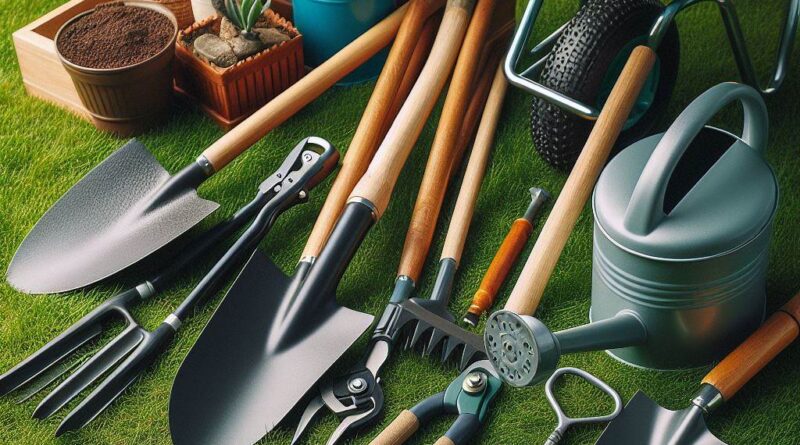10 Essential Tools Every Landscape Enthusiast Should Have
This post may contain affiliate links which means I may receive a commission for purchases made through links. As an Amazon Associate, I earn from qualifying purchases. Learn more on my Private Policy page.
Do you ever wonder what tools are truly essential for maintaining a beautiful landscape? Whether you’re a seasoned gardener or just starting to cultivate your outdoor space, having the right tools can make all the difference.
From pruning shears to a wheelbarrow, there are 10 must-have tools that every landscape enthusiast should consider having in their arsenal. These tools not only simplify the maintenance process but also contribute to the overall health and beauty of your garden.
So, what exactly are these essential tools, and how can they elevate your landscaping endeavors?
Pruning Shears

Pruning shears are essential for maintaining the health and appearance of your plants. They allow you to easily trim and shape your plants as needed. When tending to your garden, these shears become an extension of your hands, giving you precision and control. They allow you to remove dead or overgrown branches, promote new growth, and keep your plants looking tidy.
With a good pair of pruning shears, you can swiftly snip away unwanted foliage. This improves air circulation and sunlight exposure for your plants, which is crucial for their overall well-being.
Whether you’re dealing with delicate flowers or sturdy shrubs, having the right pruning shears can make a significant difference. Look for shears with sharp, high-quality blades that can easily slice through branches of various thicknesses. Comfortable handles with a secure grip are also important for reducing hand fatigue during extended use.
Pruning shears aren’t just for aesthetics; they also play a vital role in the overall vitality of your plants. By removing dead or diseased parts, you can prevent the spread of illness and encourage the plant to focus its energy on producing healthy new growth. Regular pruning with the right shears can lead to stronger, more resilient plants that are better equipped to withstand environmental stressors.
Hand Trowel
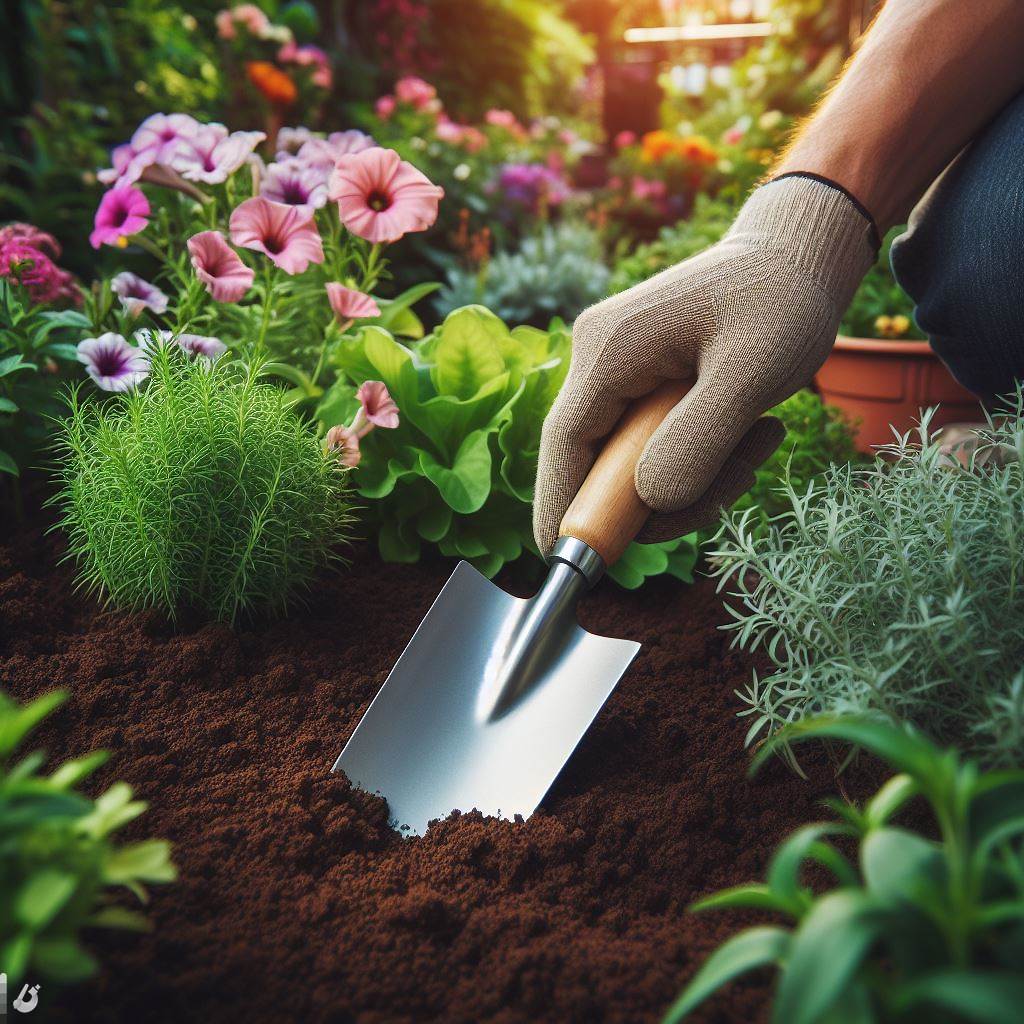
Are you wondering how a hand trowel can make your gardening tasks easier and more efficient?
A hand trowel is an essential tool for any landscaping enthusiast. Its versatility and usefulness make it a must-have for various gardening tasks. This small handheld tool is perfect for digging small holes for planting, transplanting seedlings, removing weeds, and aerating soil. Its compact size and pointed, scoop-shaped metal blade allow for precise digging and planting in tight spaces, making it ideal for container gardening or working in crowded flower beds.
The ergonomic design of a hand trowel also makes it comfortable to use for extended periods. Its sturdy handle provides a good grip, reducing hand fatigue and strain. Additionally, many hand trowels feature measurement markings on the blade, allowing for accurate planting depths, spacing, and seedling placement.
When choosing a hand trowel, look for one with a durable stainless steel blade to ensure longevity and resistance to rust. A trowel with a slightly curved or angled blade can also make digging and scooping more efficient. Some hand trowels even come with serrated edges for cutting through roots and tough soil.
Garden Gloves

Wearing garden gloves protects your hands from thorns, blisters, and dirt while working in the yard or garden. When selecting garden gloves, look for a durable pair that provides both protection and dexterity. Nitrile-coated gloves are ideal for handling thorny plants and rough surfaces, as they offer excellent puncture resistance without sacrificing flexibility. Additionally, leather gloves are a great choice for heavy-duty tasks such as moving rocks or handling sharp tools, providing superior durability and protection.
Garden gloves also shield your skin from harmful chemicals and irritants. When working with fertilizers, pesticides, or cleaning agents, it’s crucial to safeguard your hands from potential skin irritation or absorption of harmful substances. Opt for gloves with an extended cuff or gauntlet-style design to provide extra coverage and prevent any liquids or substances from entering the gloves.
Furthermore, wearing gloves promotes better hand hygiene. By creating a barrier between your skin and the soil, you can minimize the risk of exposure to bacteria, fungi, or other pathogens commonly found in the garden. This is especially important when handling soil or compost, as it reduces the likelihood of contracting infections or diseases.
Wheelbarrow
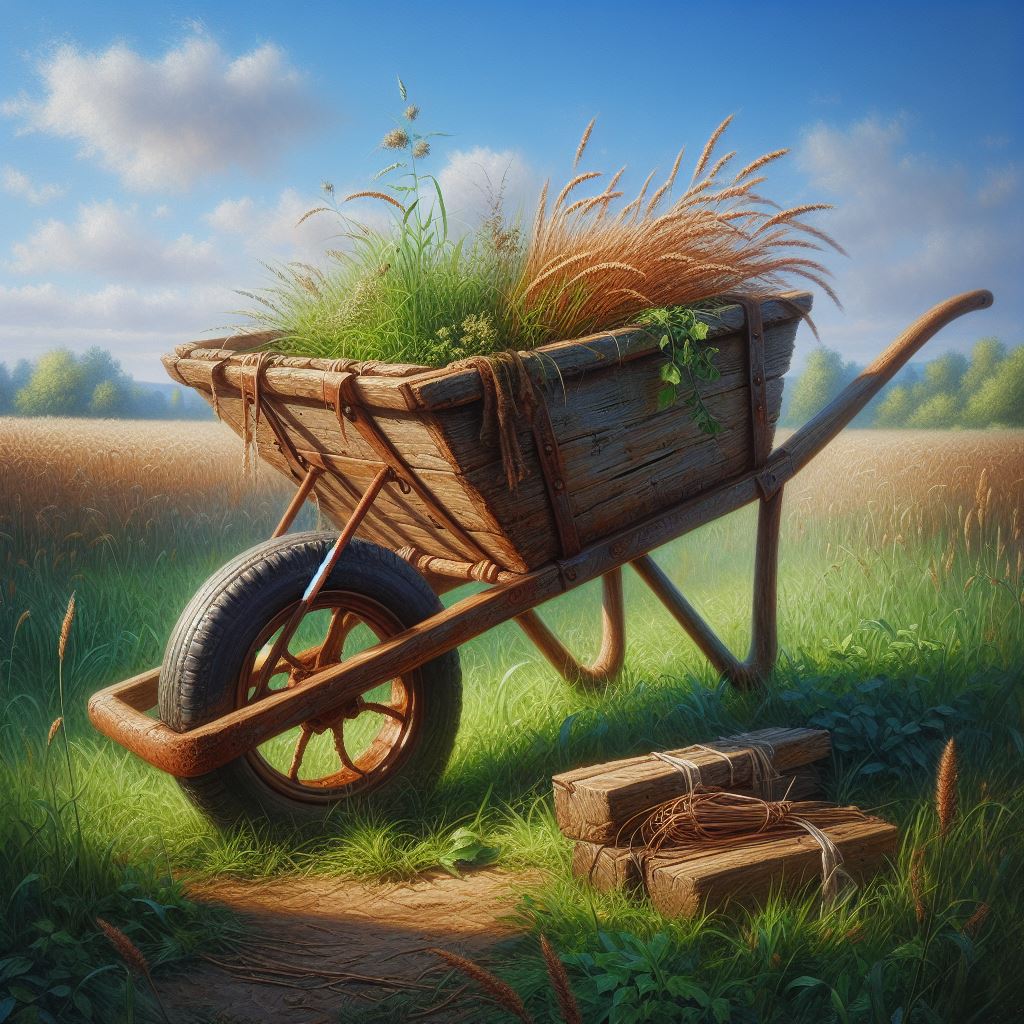
Consider investing in a durable, multi-purpose wheelbarrow to streamline your landscaping and gardening tasks. A wheelbarrow is an essential tool that can make transporting heavy loads of soil, mulch, plants, and other materials much easier. When choosing a wheelbarrow, look for one with a sturdy steel or heavy-duty plastic tray that can withstand the rigors of outdoor use. Opt for a wheelbarrow with a comfortable grip and pneumatic tires for smooth maneuverability over various terrains.
A quality wheelbarrow can significantly reduce the physical strain of moving heavy items around your garden or yard. Whether you’re spreading mulch, hauling rocks, or transporting gardening tools, a wheelbarrow can save you time and effort. It’s also a versatile tool that can be used for mixing and pouring concrete, transporting firewood, or even serving as a mobile planting station.
Furthermore, wheelbarrows come in different sizes and designs, so choose one that suits your specific needs. For small to medium-sized gardening tasks, a single-wheel wheelbarrow may suffice, while a larger, two-wheel model might be more suitable for heavier loads and larger landscaping projects. Additionally, consider accessories such as wheelbarrow covers or trays to protect your cargo from the elements.
Rake

Using a sturdy metal rake, you can easily gather leaves and debris from your garden beds and lawn. Rakes are essential tools for maintaining a tidy and well-kept outdoor space. When choosing a rake, look for one with strong, durable tines that can withstand the rigors of outdoor use. A rake with adjustable tine spacing can be especially versatile, allowing you to use it for various tasks, from collecting leaves to leveling soil.
In addition to clearing leaves, a rake can also be used for spreading mulch or compost, creating smooth, even surfaces in your garden beds. It’s a versatile tool that can help you achieve a professional-looking finish in your landscaping projects. When raking, remember to use short, controlled strokes to avoid putting unnecessary strain on your back and arms.
For larger areas, consider using a leaf blower to gather leaves into manageable piles before using the rake to collect and dispose of them. This will save you time and effort, especially during the peak of fall foliage.
When not in use, store your rake in a dry place to prevent rust and extend its lifespan. Regularly inspect the tines for any signs of damage and clean them after each use to keep the rake in top condition.
Shovel
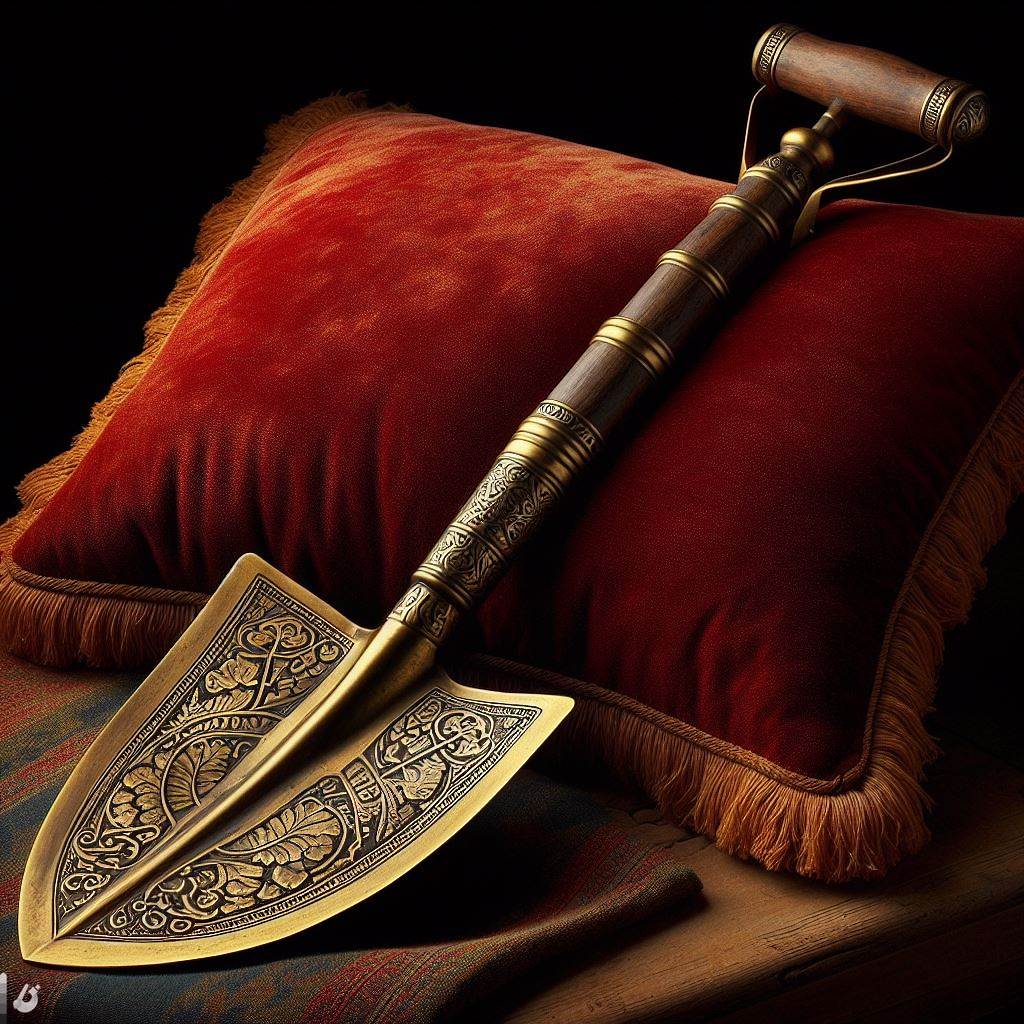
After raking leaves and debris from your garden beds and lawn with a sturdy metal rake, the next essential tool for your landscaping projects is a durable shovel.
A good shovel is indispensable for digging, lifting, and moving soil, mulch, gravel, and other materials around your garden. When choosing a shovel, look for one with a strong, ergonomic handle and a sturdy, rust-resistant blade.
A pointed or round-point shovel is versatile and ideal for digging planting holes, edging, and moving loose materials. For planting trees, shrubs, or flowers, a shovel with a pointed tip is essential to break through compacted soil and create adequate space for the roots.
If you need to move larger amounts of soil, compost, or mulch, a square-point shovel is the better option due to its larger surface area. When using a shovel, remember to bend your knees and lift with your legs to avoid strain on your back. Additionally, it’s important to keep the shovel blade sharp to make digging easier and more efficient.
In addition to its primary functions, a shovel can also be used for leveling ground, mixing soil amendments, and dividing perennials. With a reliable shovel on hand, you’ll be well-equipped to tackle a wide range of landscaping tasks with ease and efficiency.
Hedge Trimmers

Looking to maintain your hedges and bushes with precision and efficiency? Hedge trimmers are an essential tool for any landscaping enthusiast. These handheld tools come in various types, including electric, cordless, and gas-powered, offering different levels of power and mobility to suit your specific needs.
Electric hedge trimmers are ideal for small to medium-sized hedges. They’re lightweight, easy to maneuver, and emit less noise compared to their gas-powered counterparts. Cordless hedge trimmers provide even more freedom of movement since they aren’t restricted by a power cord, making them perfect for larger yards. On the other hand, gas-powered hedge trimmers are designed for heavy-duty tasks, offering unmatched power and endurance, making them suitable for extensive hedge maintenance.
When selecting a hedge trimmer, consider the blade length as it determines the tool’s cutting capacity. Longer blades are great for larger hedges, while shorter blades offer more control and precision for shaping and detailing work. Additionally, look for models with ergonomic handles and safety features to ensure comfort and protection during prolonged use.
Regular maintenance of your hedges is crucial not only for aesthetic purposes but also for the health of the plants. Hedge trimmers allow you to achieve clean and uniform cuts, promoting healthy growth and lush foliage. Invest in a quality hedge trimmer to effortlessly keep your landscaping looking pristine all year round.
Watering Can
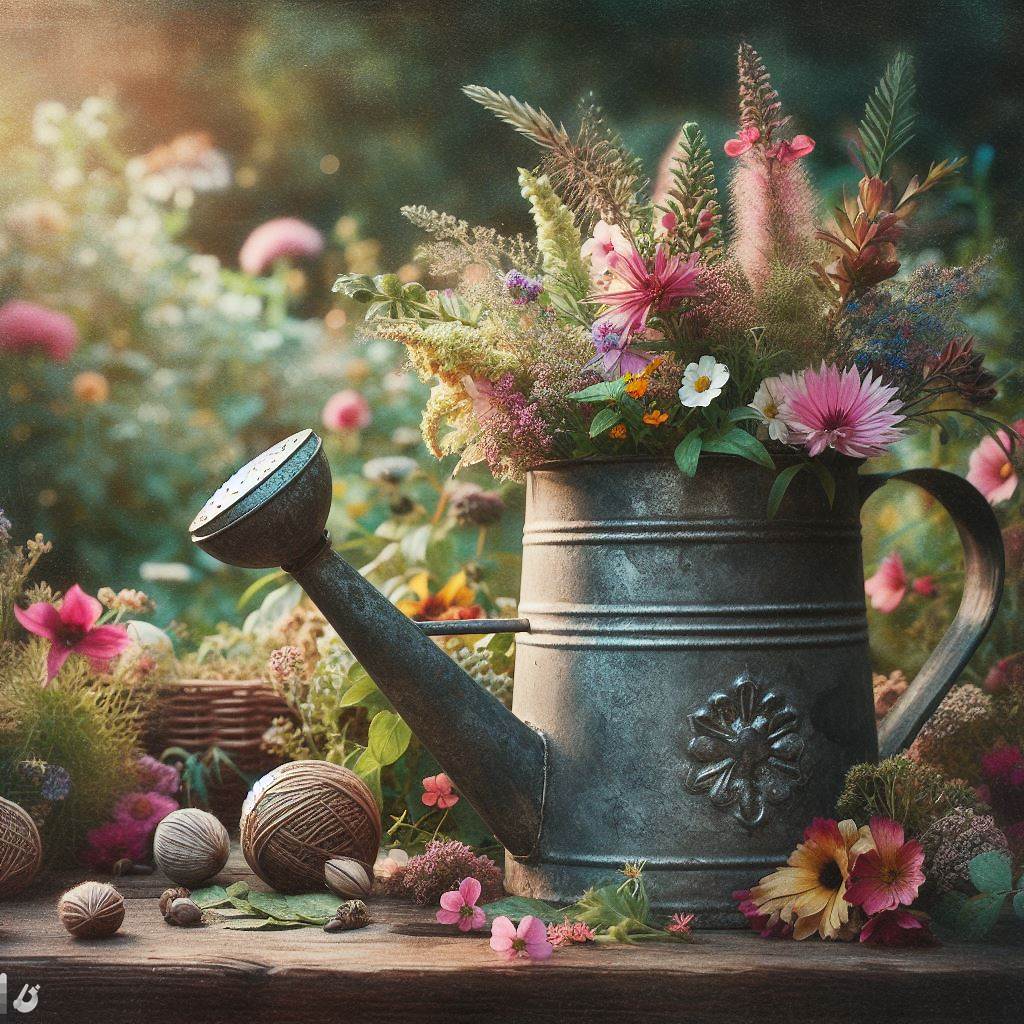
To ensure the health and vitality of your meticulously maintained hedges and bushes, a reliable watering can is an indispensable tool for delivering precise irrigation to your landscaping. When it comes to nurturing your garden, a good watering can is essential for ensuring that your plants receive the right amount of water at the right time. With the ability to control the flow and direction of water, a watering can provides a gentle and targeted approach to watering, minimizing water wastage and preventing overwatering, which can be detrimental to plant health.
Investing in a quality watering can with a narrow spout allows you to direct water precisely to the base of plants without wetting the foliage, reducing the risk of diseases caused by excess moisture on leaves. Additionally, the portability of a watering can makes it easy to access hard-to-reach areas of your garden, ensuring that every plant receives the attention it needs.
When selecting a watering can, consider the material, size, and ease of use. Look for a durable, rust-resistant can with a comfortable handle and a nozzle that provides a range of water flow options. A larger capacity can be advantageous for larger gardens, reducing the need for frequent refills.
Ultimately, a well-chosen watering can is a fundamental tool for any landscaping enthusiast, facilitating the precise and efficient watering necessary for maintaining a flourishing garden.
Soil Knife

A soil knife is a versatile and essential tool for landscaping enthusiasts, offering multifunctional capabilities for various gardening tasks. This tool typically features a sharp, serrated edge on one side and a straight, sharp edge on the other, making it perfect for cutting through roots, dividing perennials, and slicing through tough soil. Its pointed tip also allows for easy digging and planting, while the measurements etched onto the blade come in handy for precise planting depths.
One of the key benefits of a soil knife is its ability to weed with precision. The sharp edges make it easy to slice through weeds at the root, and the narrow blade can fit into tight spaces, such as between pavers or in rock gardens. Additionally, the serrated edge is perfect for cutting through tough weeds and vines.
Moreover, a soil knife is a valuable tool for harvesting produce. Its sharp blade can effortlessly cut through stems and roots, making it ideal for gathering fruits and vegetables. The ergonomic handle provides a comfortable grip and ensures that the knife is easy to maneuver, reducing strain on your hands and wrists during prolonged use.
Loppers
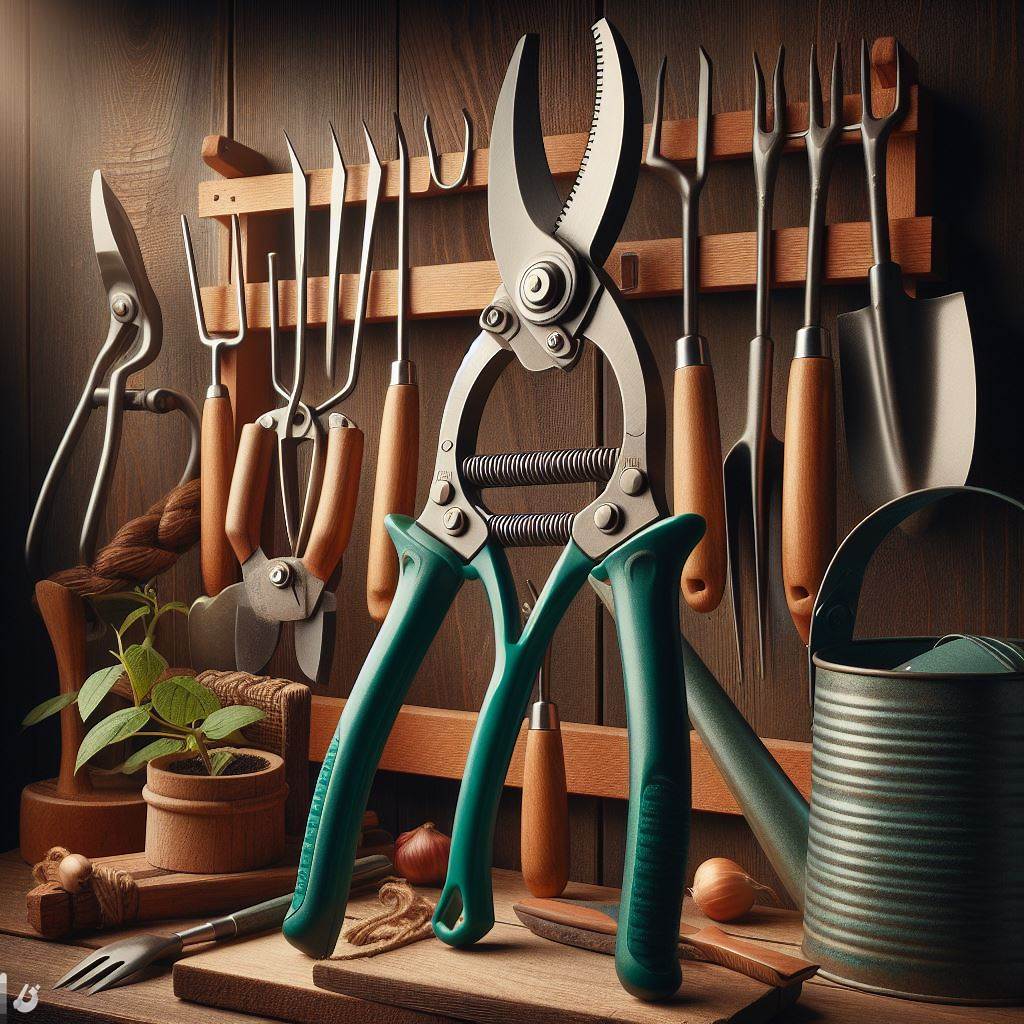
The versatility and efficiency of a soil knife make it a valuable addition to your landscaping toolkit.
Now, let’s turn our attention to loppers, another essential tool for tackling larger pruning tasks in your garden. Loppers are designed to handle thicker branches and stems that are too large for pruning shears. They’re especially useful for reaching high branches without the need for a ladder, thanks to their long handles. When choosing loppers, look for ones with sharp blades made of high-quality steel to ensure clean cuts.
There are two main types of loppers: bypass loppers and anvil loppers. Bypass loppers work like scissors, with the blades passing by each other to make a precise cut. They’re ideal for cutting live branches. On the other hand, anvil loppers have a single sharpened blade that closes down onto a flat edge, making them suitable for cutting dead wood or thicker branches.
When using loppers, it’s important to prioritize safety. Always wear gloves and protective eyewear, and be mindful of your surroundings to avoid accidental injuries. Additionally, periodically clean and oil the blades to maintain their sharpness and prolong their lifespan.
Conclusion
So there you have it, 10 essential tools every landscape enthusiast should have in their arsenal.
With these tools, you’ll be equipped to tackle any landscaping project with ease and precision. Whether you’re pruning, planting, or maintaining your garden, having the right tools can make all the difference.
So go ahead and invest in these must-have tools, and take your landscaping game to the next level!
